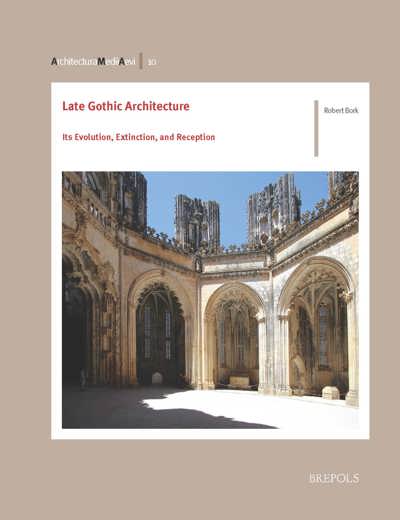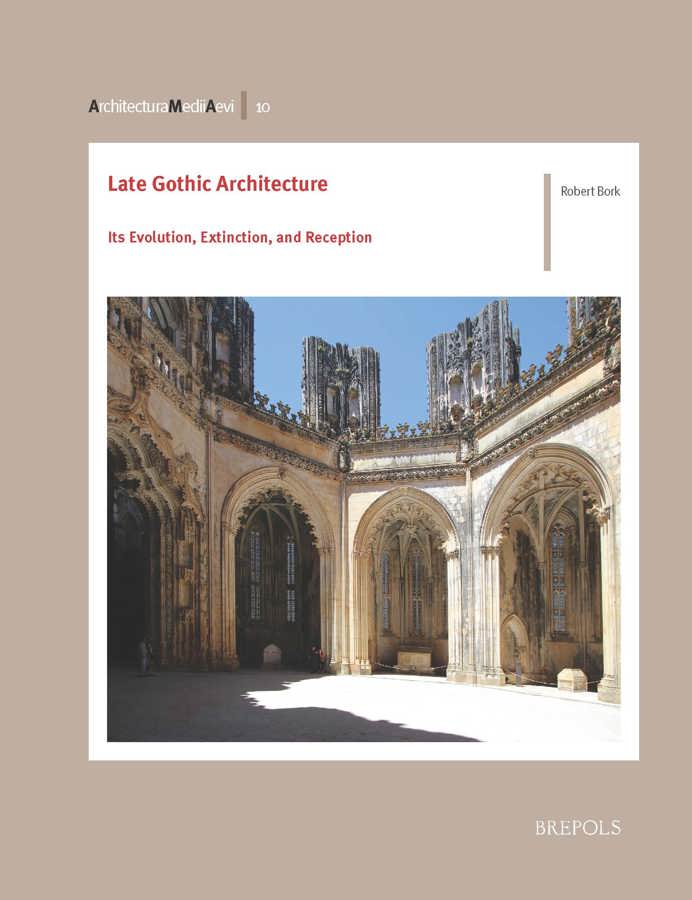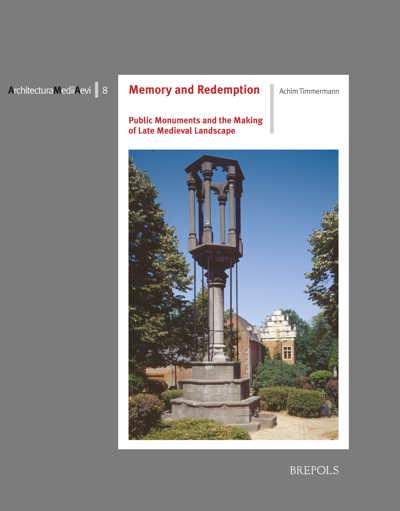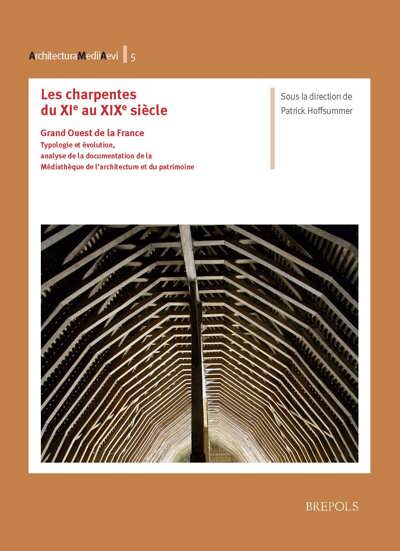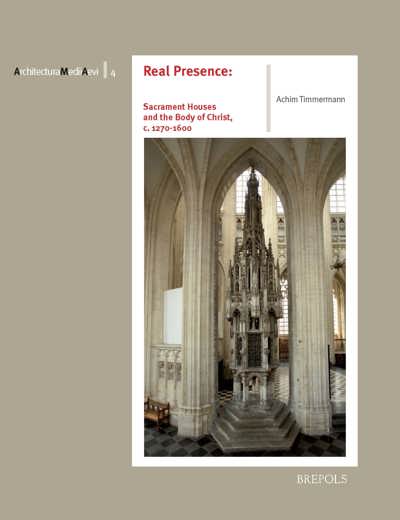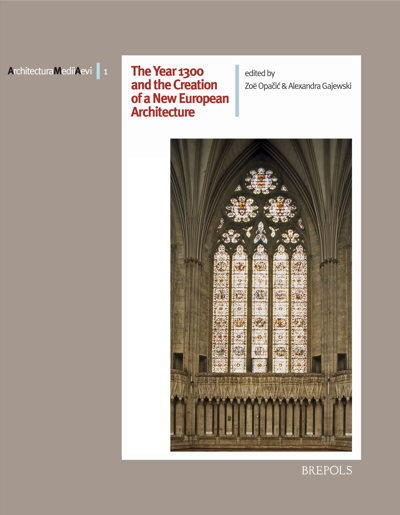
- Pages: x + 552 p.
- Size:216 x 280 mm
- Illustrations:337 b/w, 32 col.
- Language(s):English
- Publication Year:2018
- € 130,00 EXCL. VAT RETAIL PRICE
- ISBN: 978-2-503-56894-2
- Paperback
- Available
“Robert Bork has written a remarkable book that in its scope has no competition. He offers a detailed analysis of late Gothic architecture, tracing its long history and examining the ultimately successful challenge to the style made by classicizing architecture from Italy.” (Ethan Matt Kavaler, in the Journal of the Society of Architectural Historians, 78/4, December 2019)
« La réussite du travail de Robert Bork est à la hauteur de l’entreprise : désormais, il existe une synthèse, richement illustrée, qui permet de mieux comprendre toutes les vicissitudes d’un courant architectural et rend accessible une abondante littérature étrangère. » (Julien Noblet, dans Histara, 06.01.2020)
“(...) an immensely interesting book that argues provocatively for late Gothic architecture as something distinct from the inert survivals and nostalgic revivals that laid claim to it. The material is compelling not only because of the intrinsically fascinating forms of the monuments themselves, but also because their long history of misreading provides an opening to rethink the contradictions of this era in a much broader sense. Bork has done the field a tremendous service by sustaining his arguments across an expansive geographic and temporal span and rooting them in the intellectual apparatus of their time. The result is an eloquent and entertaining book that will be indispensable for any serious work on the late Middle Ages that takes Europe’s built environment into account." (Shirin Fozi, in Architectural Histories, 8/1, 2020)
“Late Gothic Architecture: Its Evolution, Extinction, and Reception (2018) by Robert Bork is a work impressive both in physical size and scholarly breadth (…) [It] succeeds in broadly spanning not only architectural style, time, and geography, but also intended audience (…) Late Gothic Architecture most certainly fulfils its purpose, providing a welcome and much needed new voice to the scholarly chorus of art historical texts on Gothic architecture.” (Katherine A. Rush, in The Medieval Review, 26/06/2020)
“Bork’s skill in drawing such a large and diverse body of work together, crucially illustrated with an impressive range of images, truly deserves appreciation. A thoughtful study clear enough to orient novice students to the issues at hand but with depth enough to provide specialists much to ponder, this book will take its place as a substantial contribution in the canon of scholarship on Gothic architecture”(Charlotte A. Stanford, in Mediaevistik, 32, 2019, p. 548)
“Late Gothic Architecture is a field-changing publication, one that is both generous in the breadth of its content and provocative in its framing. Not only will it bring renewed attention to a relatively marginalised aspect of our architectural heritage, it also offers an essential foundation for future research in the area.” (Costanza Beltrami, in Architectural Histories, 12, 2020, p. 317)
“Robert Bork has written a magisterial history of the rise, flowering, diversification, and eclipse of European late Gothic architecture (ca. 1290–1525/50). In fact, the book is broader and more comprehensive than its stated subject.” (Dan Ewing, in Renaissance Quarterly, LXXIV/I, 2021, p. 237)
Robert Bork, Professor of Art History at the University of Iowa, specializes in the study of Gothic architecture and medieval design practice. Bork’s research has received support from the American Council of Learned Societies, the Alexander von Humboldt Foundation, and the Center for Advanced Study in the Visual Arts. His previous books include "Great Spires: Skyscrapers of the New Jerusalem" (2003) and "The Geometry of Creation: Architectural Drawing and the Dynamics of Gothic Design" (2011).
In this book, Robert Bork offers a sweeping reassessment of late Gothic architecture and its fate in the Renaissance. In a chronologically organized narrative covering the whole of western and central Europe, he demonstrates that the Gothic design tradition remained inherently vital throughout the fourteenth and fifteenth centuries, creating spectacular monuments in a wide variety of national and regional styles. Bork argues that the displacement of this Gothic tradition from its long-standing position of artistic leadership in the years around 1500 reflected the impact of three main external forces: the rise of a rival architectural culture that championed the use of classical forms with a new theoretical sophistication; the appropriation of that architectural language by patrons who wished to associate themselves with papal and imperial Rome; and the chaos of the Reformation, which disrupted the circumstances of church construction on which the Gothic tradition had formerly depended. Bork further argues that art historians have much to gain from considering the character and fate of late Gothic architecture, not only because the monuments in question are intrinsically fascinating, but also because examination of the way their story has been told—and left untold, in many accounts of the “Northern Renaissance”—can reveal a great deal about schemes of categorization and prioritization that continue to shape the discipline even in the twenty-first century.
Introduction: The Anti-Gothic Turn
This section explains the need for a synthetic reassessment of the late Gothic architectural tradition and its fate, arguing that its achievements have too often been neglected because of two contrasting historiographical tendencies: the celebration of the Renaissance, in broad accounts of the period; and the fragmentation of the discussion into narrow case studies that take the social background for granted, in the more nuanced scholarly literature. The present book navigates between these extremes, offering a chronologically organized narrative that shows how the intrinsically dynamic late Gothic tradition succumbed to external forces, including the Reformation and the adoption of Renaissance classicism as an instrument of royal propaganda.
Chapter 1: Getting the Point—Antiquity to 1300
This chapter introduces De Architectura, the treatise by the Roman architect Vitruvius that would prove so influential in the Renaissance, before concisely tracing the history of medieval architectural innovation that permitted the invention of the Gothic manner. Consideration of the first phases of the Gothic style and its spread across Europe establishes a context for subsequent discussion of later medieval and Renaissance developments.
Chapter 2: From Gothic to Late Gothic—1300 to 1350
The first portion of this chapter explores the relationship between Gothic architecture, the figural arts, and new conceptions of history in the Italian world of Giotto, Petrarch, and their contemporaries. The second portion traces the emergence of the Decorated and Perpendicular Styles in England, and the third discusses continental variations on the Gothic tradition in the rest of transalpine Europe during the first half of the fourteenth century.
Chapter 3: The Evolution of Late Gothic—1350 to 1400
This chapter begins with consideration of the Black Death and its social impact, before going on to trace the development of late Gothic architecture across Europe in the second half of the fourteenth century, with particular attention to the work of the Parlers and their followers. The chapter concludes with a case study of the famous debates that took place in the Milan Cathedral workshop around 1400.
Chapter 4: The Antique Mode and its Gothic Context—1400 to 1450
The first section of this chapter discusses the emergence of the antique architectural mode in Florence, acknowledging the crucial role of Brunelleschi in this development, while stressing the largely Gothic character of his greatest work, the dome of Florence Cathedral. The rest of the chapter considers the simultaneous flourishing of late Gothic design in transalpine Europe, touching on the emergence of the French Flamboyant mode, the popularity of tower-building projects in the Holy Roman Empire, and the influx of northern designers into Iberia.
Chapter 5: Polarized Modernisms—1450 to 1500
The contrasting claims to authority of the classical and Gothic design modes occupy center stage in this chapter. Its first section explores the increasingly sophisticated intellectual culture of Italian Renaissance designers, including figures such as Alberti and Francesco di Giorgio who wrote original architectural treatises inspired by Vitruvius’s De Architectura. Subsequent sections examine the very different culture of the Germanic lodges, with attention to the 1459 masonic meeting in Regensburg, the early spread of the antique mode into Hungary during the reign of Matthias Corvinus, and the continued flourishing of the Gothic design mode in the rest of Europe.
Chapter 6: Collision and Hybridity—1500 to 1525
This chapter explores the crucial period when the classical motifs and architectural ideas began to achieve popularity in many transalpine countries, sometimes creating vivid counterpoints to the still dominant Gothic mode, other times blending with Gothic elements in imaginative syntheses. Although architectural projects occupy center stage here, as throughout the book, crucial artists working in other media also receive attention, as in the cases of Albrecht Dürer and Jan Gossaert. The successive sections of the chapter show that the antique mode became fashionable in secular and funerary contexts before its widespread adoption in ecclesiastical building projects.
Chapter 7: Purge and Extinction—1525 to 1575
During the half-century examined in this chapter, the Gothic tradition lost its longstanding position of leadership in European architectural culture. Principal causes of this revolutionary development included the spread of Renaissance architectural theory through the publication of illustrated architectural treatises, the embrace of the antique mode by royal patrons eager to associate themselves with the glory of the Roman Empire, and the Protestant Reformation, which destabilized the structures of patronage on which Gothic church construction had formerly depended. Ultimately, therefore, this chapter argues that the demise of the Gothic tradition should be understood as an extinction event of sorts, one caused by a wave of rapid cultural climate change initially external to the sphere of transalpine architectural practice.
Epilogue: The legacy of the Anti-Gothic Turn
The final section of the book briefly considers the ways that the story of late Gothic architecture has been told—and often left untold—from the Renaissance onwards. Notable figures in this narrative include Vasari, who built his hostility to the Gothic tradition into the very foundations of art history writing, Van Mander, who marginalized architecture in creating his canon of great northern art, and Huizinga, whose characterization of the late Middle Ages as a time of autumnal decline remains stubbornly influential a century after its publication. The Gothic tradition has certainly had its champions, and its later phases have begun to receive more sympathetic scholarly attention in recent decades, but late Gothic architecture continues to occupy a vexed position in the dominant narratives of art history, as the odd framing of the largely architecture-free “Northern Renaissance” category demonstrates. The book concludes by arguing, therefore, that the spectacular achievements of late Gothic builders deserve study not only because of their inherent interest, but also because their changing reception can reveal a great deal about the way that art history has developed as an academic discipline.
